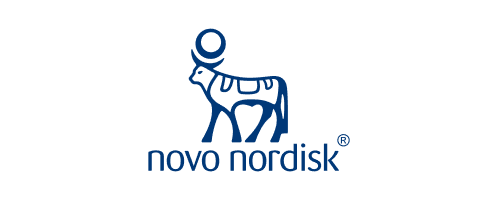Preparing for Modular Content
in the Hybrid Future
Content experts from some of the industry’s leading agencies discuss why modular content is essential for the world of modern marketing.
With customer interactions now happening simultaneously over virtual meetings, text, iPad, and email, to name several, commercial teams need to be prepared with tailored content fit for any channel. More importantly, they need content that can go to market quickly without risking compliance. Leaders from Intouch Group, Real Chemistry, Havas Health & You, and AREA 23 talk with Stacy Payne, director of content partners at Veeva, on why companies should get started with modular content and how they can build a foundation to enable more personalized experiences for healthcare professionals (HCP).
SP: Why is modular content a must in the world of hybrid engagement?
Vikki Ward, European content delivery lead at Havas Health & You: The massive shift to hybrid interactions and remote calls is giving field reps the option to produce smaller, bespoke interactions on their iPad or on the web, meeting HCPs where they are. This requires content that fuels more varied and personalized interactions. Modular content provides a templated, bite-sized approach to content creation, making it easier to form omnichannel strategies. It can be a fit for different types of channel preferences, online or in person, while still adhering to time and cost savings. Ultimately, it empowers marketers to hone in on their creativity while still gaining the benefits of automation and efficiency.
SP: What is one of the biggest challenges companies face when trying to adopt modular content?
David Windhausen, executive vice president at Intouch Group: Internal change management is often the most difficult and costly roadblock to overcome. Now that teams must create more content faster and service more brands in the market than ever before, alignment across commercial, regulatory, and brand teams is extremely important to respond at the speed that our customers demand.
Adam Hirsch, practice leader, digital experience at Real Chemistry: While change management can be a large hurdle to get over, the efficiencies you benefit from once successfully driving adoption of modular content will only grow. And this requires continuous education. Modular content is still new for many companies, therefore reminding members across regulatory and commercial teams about the importance of this new approach and how they can make an impact is an important piece of the puzzle.
VW: It’s not just about getting alignment on a global level. Companies also need to identify what’s in it for local teams. Companies should spend time upfront ensuring that everyone along the content supply chain is on board with modular content and provide reasons why they should buy in on this new process. This will determine in great measure if modular content fails or succeeds.
SP: How can companies get started with modular content?
DW: First, look at your brand, or a series of brands, and do an audit of the types of content being produced for each product. Next, see if you find similarities across these content fragments and ask if your team can start to form standards for how certain pieces are created. Lastly, ensure you have the right systems in place to manage modular workflows. This requires having a content library accessible by creative agencies, developers, and regulators to create, approve, and distribute content quickly.
SP: How will modular content impact current content creation processes?
AH: HCPs and patients are bombarded with content on any given day. Especially now that digital has tripled the need for content, marketers need to understand how they’re going to personalize the content being produced. To do this well and at scale, you need a modular content approach. It allows you to mix and match approved images, information, and videos together and tailor it to the audiences you’re targeting—at the right moment in their customer journey.
Lydia Jani, director of regulatory operations at AREA 23, an IPG Health Network Company: And it will also help companies find ways of working faster in other parts of the content creation process. For example, I think we’ll start asking ourselves if there are other process efficiencies we can realize, even applying a modular approach to workstreams outside of the submission system.
SP: How does experience design come into play with modular content?
AH: Every HCP and patient has unique preferences and behaviors, especially now that digital has created new habits and engagement patterns. This makes it even more important to drill down on the individual HCPs behind the personas we create and the related channel strategies. Modular content is perfect for this new era of dynamic content advertising because you can plug and play different messages and content to fit individual customer needs while not losing time on approval delays or costs.
SP: What are the benefits of working with an organized claims library, and how does it create efficiencies on the agencies’ side?
LJ: As the industry becomes more digital, there’s a certain expectation of maximizing efficiency while maintaining the same standard of compliance. If the claims library isn’t complete, this adds hours or even days to the submission process, causing a slew of problems, including missed deadlines. But with a completed claims library and the advent of Vault PromoMats’ auto linking feature, we could potentially save days of work. Down the road, the auto linking feature can also help with processes outside of submissions, including agency fact-checking and editorial rounds.
Jen Ma, SVP, director of integrated production at AREA 23, an IPG Health Network Company: Concepts or intentions of layouts can also become unclear when we’re putting content through medical, legal, and regulatory (MLR) reviews, compounding the fact that teams are trying to get through tight timelines already. Having these pre-approved claims ready before starting the creation and review process will fast-track content approvals rather than requiring them to retag and relink content each time.
SP: What is the importance of having a digital asset management system (DAM) when adopting a modular approach?
JM: Consider the DAM your Lego bucket that holds all your different content assets. It holds vital information on what content was already approved and tagged. It also makes it easier to search for existing materials and facilitates content reuse in a more compliant way. Overall, it saves a lot of back and forth when trying to localize content or reuse assets in different regions.
VW: It’s critical to have a one-stop-shop for your content using a DAM system. Once you have completed your regulatory submissions approval, that item is then pushed into the DAM to keep track of its progress and stay compliant. And with the speed and scale that we’re operating at today, this is critical.
To learn more about getting started with modular content, read the latest white paper from our Agency Opinion Leader Forum.



